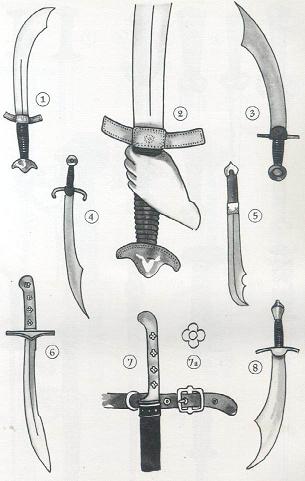Posts: 254 Location: Lubbock, TX
Wed 26 Nov, 2008 8:17 pm
The blade looks like a messer. The guard looks like a messer. The pommel looks like a messer. Why can't it be a messer? The pommel is the telling feature to me and is the main thing I look for to tell the difference.
The way I understand it, the difference between a messer and a falchion is in the hilt construction. Falchions have hilts constructed just like swords. Messers are constructed like knives. As far as
blade geometry there seems to be a fair amount of overlap. But I imagine there is almost no difference in terms of handling, performance, function, etc. Shorter, curved blades seem to have been used across Europe throughout the Medieval-Renaissance period. They may have looked a bit different and been called different things at different times and in different places...but so did all the other swords shapes too.



